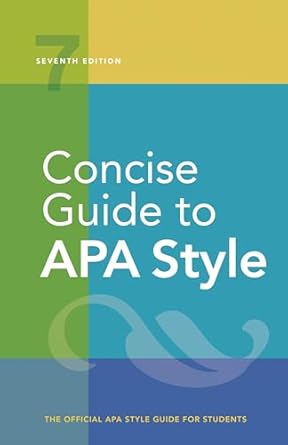[toc]
quotation mark mastery a punctuation guide
Concise Guide to APA Style: 7th Edition (OFFICIAL)
Page 111 Review
The Nuances of Quotation Marks: A Detailed Analysis
This ebook excerpt delves into the often-misunderstood rules surrounding quotation marks, offering a comprehensive guide for writers and editors.
It meticulously outlines when and how to use these punctuation marks, going beyond the basic function of indicating direct speech.
Commas and Periods Inside
The text starts by addressing the placement of commas and periods relative to quotation marks:
Place commas and periods inside closing quotation marks.
This rule, though seemingly simple, is a cornerstone of proper punctuation.
It ensures clarity and consistency in written communication.
This reflects a style choice, not necessarily a grammatical requirement in all English-speaking regions.
Other Punctuation Outside
In contrast to commas and periods, other punctuation marks follow a different rule:
Place other punctuation marks (e.g., colons, semicolons, ellipses) outside closing quotation marks.
This distinction is crucial for maintaining logical sentence structure and avoiding ambiguity.
The placement of these marks can significantly alter the meaning and flow of a sentence.
Specific Use Cases: Double Quotation Marks
The excerpt then moves on to detail specific scenarios where double quotation marks are necessary.
These include:
Linguistic Examples
Using quotation marks to refer to a letter, word, phrase, or sentence as a linguistic example or as itself:
the letter “m”
the singular “they”
answered “yes” or “no”
This usage highlights the word or phrase as an object of discussion, rather than as part of the sentence’s narrative.
It signals that the reader should focus on the word itself.
Presenting Stimuli
Quotation marks are also used to present stimuli in text:
The stimulus words were “garden,” “laundry,” “briefcase,” and “salary.”
However, the excerpt suggests that long lists of stimuli are better presented in a table, where quotation marks are not needed.
This emphasizes the importance of choosing the most effective format for clarity and readability.
Reproducing Test Items or Instructions
When reproducing material from a test item or verbatim instructions to participants, quotation marks are employed:
The first item was “How tired do you feel after a long day at work?”
Participants read, “You can write as much as you like when answering the questions.”
For lengthy instructions, the excerpt advises using block quotes or appendices, which removes the need for quotation marks and improves readability.
Ironic Comments, Slang, and Invented Expressions
Another crucial use case is introducing a word or phrase used ironically, as slang, or as an invented expression:
considered “normal” behavior
called a “friendly link”
Importantly, the excerpt emphasizes that quotation marks should only be used for the first occurrence of the word or phrase.
Subsequent occurrences should be written without them.
For example, after initial use, it becomes simply ‘normal behavior’ or ‘a friendly link’.
Introducing a Label
The excerpt also clarifies the use of quotation marks when introducing a label:
The image label changed from “spiderweb” to “dartboard.” The spiderweb and dartboard labels. . .
Similar to ironic comments, slang, and invented expressions, quotation marks are used only for the first occurrence of the label.
Beyond the Basics
This excerpt provides a solid foundation for understanding the proper use of quotation marks.
While covering the essentials, it also touches on stylistic considerations and best practices for ensuring clarity and readability.
By adhering to these guidelines, writers can avoid common errors and enhance the professionalism of their work.
This thorough explanation is a valuable resource for anyone seeking to master the art of punctuation.
Buy full ebook for only $18: https://www.lulu.com/shop/american-psychological-association/concise-guide-to-apa-style-7th-edition-official/ebook/product-rmzpq54.html?page=1&pageSize=4
Quotation Mark Mastery A Punctuation Guide
Read more: Direct Quotations: Mastering Citation & Avoiding Mistakes


Leave a Reply